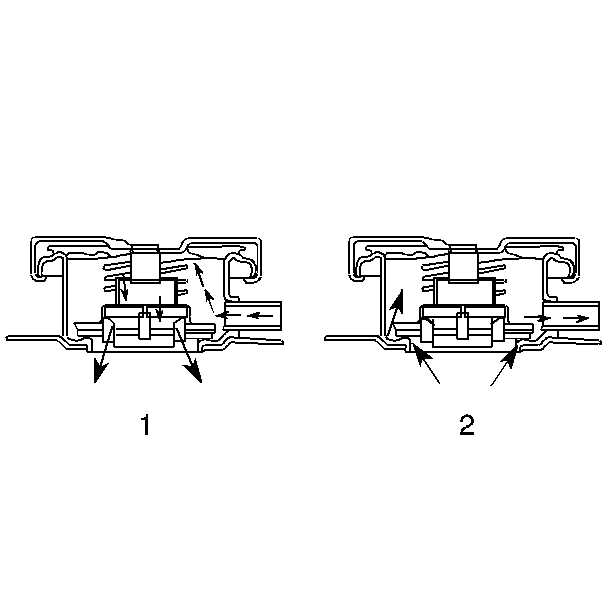Radiator Fill Cap

A pressure-type radiator fill cap is used with the crossflow radiator to allow a buildup of 124 kPa (18 psi) in the cooling system. This pressure raises the boiling point of the coolant to about 128°C (262°F) at sea level.
The pressure-type cap contains a blowoff (pressure) valve (2) and a vacuum (atmospheric) valve (1). A spring holds the pressure valve against the valve's seat. This spring protects the radiator by relieving any pressure that exceeds the systems maximum pressure.
In order to prevent radiator collapse, caused by vacuum as the engine cools, the vacuum valve prevents the occurrence of pressure differences between the cooling system and the atmosphere.
Caution: Do not remove the radiator cap while the cooling system is hot. Serious personal injury may result. Only remove the radiator cap from a cool engine.
Caution: Under pressure, the temperature of the solution in the radiator can be considerably higher, without boiling. Removing the radiator cap while the engine is hot (pressure is high), will cause the solution to boil instantaneously, with explosive force. The solution will spew out over the engine, fenders, and the person removing the cap. Serious bodily injury may result. Flammable antifreeze, such as alcohol, is not recommended for use at any time. Flammable antifreeze could cause a serious fire.
In order to discourage unintentional removal, the radiator fill cap is designed without finger grips. In order to safely remove the radiator cap, do the following steps:
- Slowly rotate the cap counterclockwise, do not press down, to the detent.
- Allow any pressure to be relieved.
- Press down on the cap. Continue to rotate the cap counterclockwise.
- Lift off the cap.
The following are embossed on the cap:
| • | A caution regarding opening the system while hot |
| • | Arrows that indicate the proper closed position |
